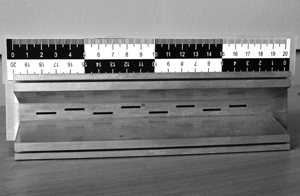Multi-view synthesized aperture radar
DOI:
https://doi.org/10.3103/S0735272711100025Keywords:
plane radar, radar with synthesized aperture, multi-view images, signal processing, radar images, trajectory instabilitiesAbstract
This article considers synthesized aperture radar (SAR), developed and manufactured in Radio Astronomy Institute of Ukrainian Academy of Sciences. SAR operates in 3 cm frequency band and it intended for obtaining multi-view images from light-motor planes. Technical and scientific solutions found during design of this radar are described. Characteristics examples of obtained images are provided.
References
- C. J. Oliver and S. Quegan, Understanding Synthetic Aperture Radar Images (Artech House, Boston–London, 1998).
- C. H. Gierull, “Statistical analysis of multilook SAR interferograms for CFAR detection of ground moving targets,” IEEE Trans. Geosci. Remote Sensing 42, No. 4, 691 (2004).
- O. O. Bezvesilniy, I. V. Dukhopelnykova, V. V. Vinogradov, and D. M. Vavriv, “Retrieving 3-D topography by using a single-antenna squint-mode airborne SAR,” IEEE Trans. Geosci. Remote Sensing 45, No. 11, 3574 (2007).
- D. М. Vavriv, O. O. Bezvesilniy, V. V. Vinogradov, and Ye. V. Duhopelnikova, “Determination of Earth surface relief using high-precision measurements of Doppler centroid by means of plane radar with synthesized aperture,” DAN Ukraine, No. 4, 86 (2008).
- G. Franceschetti and R. Lanari, Synthetic Aperture Radar Processing (CRC Press, New York, 1999).
- S. Buckreuss, “Motion errors in an airborne synthetic aperture radar system,” European Trans. Telecom. 2, No. 6, 655 (1991).
- D. Blacknell, A. Freeman, S. Quegan, et al., “Geometric accuracy in airborne SAR images,” IEEE Trans. Aerosp. Electron. Syst. 25, No. 2, 241 (1989).
- O. O. Bezvesilniy, I. M. Gorovyi, S. V. Sosnytskiy, V. V. Vinogradov, and D. M. Vavriv, “SAR processing algorithm with built-in geometric correction,” Radiofiz. Radioastron. 16, No. 1, 98 (2011).
- O. O. Bezvesilniy, I. M. Gorovyi, V. V. Vinogradov, and D. M. Vavriv, “Correction of radiometric errors by multi-look processing with extended number of looks,” in Proc. of 11th Int. Radar Symposium (IRS 2010), June 16–18, 2010, Vilnius, Lithuania (Vilnius, 2010), Vol. 1, pp. 26–29.
- O. O. Bezvesilniy, I. M. Gorovyi, V. V. Vynogradov, and D. M. Vavriv, “Range-Doppler algorithm with extended number of looks,” in Proc. of 3rd Int. Microwaves, Radar and Remote Sensing Symposium (MRRS 2011), August 25–27, 2011, Kyiv, Ukraine (Kyiv, 2011).
- D. M. Vavriv, V. V. Vinogradov, V. A. Volkov, et al., “Cost-effective airborne SAR,” Radiofiz. Radioastron. 11, No. 3, 276 (2006).
- O. O. Bezvesilniy, V. V. Vinogradov, and D. M. Vavriv, “Estimating Doppler centroid and autofocusing for airborne SAR,” in Proc. of 6th Int. Radar Symposium (IRS 2005), September 6–8, 2005, Berlin, Germany (Berlin, 2005), pp. 59–63.
- O. O. Bezvesilniy, D. М. Vavriv, and V. V. Vinogradov, “Estimation of Doppler centroid and auto-focusing in airborne side observation synthesized aperture radar,” DAN Ukraine, No. 9, 77 (2005).
- S. S. Sekretarov and D. М. Vavriv, “Waveguide-slot antennas for modern radar systems,” Uspekhi Sovremennoi Radioelektroniki. Zarubezhnaya Radioelektronika, No. 3, 45 (2011).
- I. G. Cumming and F. H. Wong, Digital Processing of Synthetic Aperture Radar Data: Algorithms and Implementation (Artech House, Boston–London, 2005).

Downloads
Published
2011-10-01
Issue
Section
Research Articles

